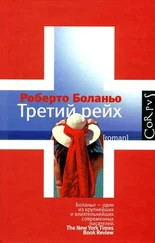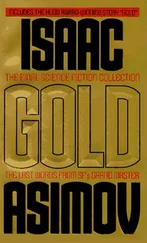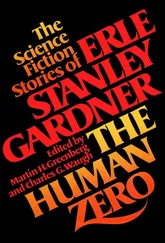Dr. Carvajal was silent; his face, lit by the last rays of sun filtering in through the blinds, resembled a skull haphazardly covered by a film of skin. And yet there was something strong and healthy about his head.
“What I’m trying to tell you,” he said at last, “is that six hundred little magazines give or take make no difference…”
“Whatever happens happens, you mean?” José Arco interrupted him.
“Precisely, young man, and the only thing an intellectual can do is watch things blow up, from a safe distance, of course.”
“In my opinion,” I said, leafing through the four pages of a publication ambiguously titled Paradise Lost and Paradise Regained, “the creators of these magazines are intellectuals, too.”
“Yes,” said José Arco, “motorcycle thieves.”
Dr. Carvajal smiled in satisfaction; deep down he was a cinema-club neorealist.
“Victims,” he said, and though he was smiling, his voice was terrible. “Oblivious players in a drama that in all likelihood I’ll never witness. Or maybe not even that: a meaningless accident of fate. In the United States, they’re getting into video, I have it on good authority. In London, teenagers play for a few months at being pop stars. And nothing comes of it, of course. Here, as you might expect, we seek out the cheapest and most pathetic drug or hobby: poetry, poetry magazines; that’s just the way it is. There’s no getting around the fact that this is the land of Cantinflas and Agustín Lara.”
I was about to say that I thought he was wrong: back then I believed—and even now I may still believe—that Latin America’s greatest literary successes came in verse form. To bad-mouth Vallejo, to lack an in-depth knowledge of the work of Gabriela Mistral, to confuse Huidobro with Reverdy: these were things that made me sick, and then angry. The poetry of our poor countries was a motive—maybe the main motive—of pride for the young Turk who took possession of my body once a week. But I didn’t say any of this. Instead I remembered something that I’d read in Jan’s collection of papers, and I connected it immediately to the subject of our conversation.
“I don’t think that video is the Americans’ drug, though actually I don’t know whether you’re talking about video games or making movies. But I can tell you that a new hobby is gaining ground: war-gaming. The range is pretty broad, though basically there are two main approaches: board games, played on a hexagonal grid with cardboard markers called counters, and weekend war games, like the ones we played when we were kids, except that the gringos who play them now pay serious money to support their habit. The first kind of game, with a hexagonal grid for a battlefield, assigns the player the role of company commander or strategist (though there are also tacticians), like the Squad Leader series, in which each counter (there are over a thousand of them) represents ten men, more or less. These games mostly take more than five hours to play, and some even go on for twenty or thirty hours. Their origins are in German Kriegsspiel, I think, those big nineteenth-century strategy boards that made it possible to play out wars before they began, or chess, which is an abstract war game. In the other kind of game, the player steps into the skin of a soldier, like in a play. The game consists of a day or a weekend spent in military exercises. There are lessons in handling all types of weapons, conferences of Vietnam veterans, mock battles, and even parachute jumps arranged by some organizations for their members. Whatever variant you choose, the simulations claim to be models of historical accuracy: the battles never happen in limbo but in concrete places, either in the past or in some predictable or fantasy future: Vietnam, Iran, Libya, Cuba, Colombia, El Salvador, Nicaragua, even Mexico are among the scenes of the skirmishes. Important to note: some battles take place in the United States itself, where the enemy is a hypothetical black or Chicano guerrilla force. The hex-board campaigns mostly feature World War II, though you can also find near-future wars, from the Sixth Fleet shooting up every living thing in the Mediterranean to a European-theater-only version of World War III, atomic bombs included. But most are of them are World War II games, with obvious Nazi iconography and perspectives. In their ads, for example, they promise the prospective player that if he plays well and is lucky, Operation Barbarossa will succeed, Rommel’s tanks will reach Cairo, and the Ardennes Offensive will end in an honorable armistice. Both hobbies, the board games and the weekend games, have more than one dedicated journal and are supported by an infrastructure only conceivable in the United States. Incidentally, the publisher of the board games is now putting out computer war games. As far as I can tell, business is booming.”
“But who plays?” asked Dr. Carvajal.
“That’s the strangest thing. You’d think that only murderers and Ku Klux Klanners would show up for the live war games, but it turns out that it’s popular among college graduates, housewives, yuppies, and people who are sick of jogging. Whereas the board games attract lazy fascists, military-history buffs, shy teenage boys, and even former chess players: I hear that Bobby Fischer has been playing Battle of Gettysburg for more than two years. Not against anyone, just by himself.”
Dr. Carvajal nodded with a cold angelic smile.
“The world has taken a strange turn,” he murmured. “Miniaturists always struck me as minions of the devil. All my life, I’ve believed that Evil practices her pirouettes on a small stage before making her debut. Frankly, compared to these gringo fetishes, our magazines seem like what they are: lame beasts.”
“But they’re alive,” said José Arco. Then he asked me under his breath, “Where did you get all that?”
I said it was from the papers that Jan had been collecting.
“According to him, the John Birch Society is a sweet old folks’ home compared to the gang at Soldier of Fortune magazine, who aren’t just mercenaries by trade but the true creators of imperialist performance art, also known as happenings. The same can be said about all the businesses supporting board games. Avalon Hill, for example, publishes a magazine that you should take a look at someday: it’s called The General, and it’s the bible of armchair Mansteins, Guderians, and Kleists.”
“Jan talked to me about Guderian once.”
Dr. Carvajal was staring at us like a suicide rock.
“Jan is a friend of ours,” I explained. “He says that… Guderian’s tanks have to be stopped over and over—across a whole century, I guess, though I don’t know whether that has to do with what we’re talking about.”
“Bloodbath lyricism,” grumbled the doctor, and he waved his hand as if to say that none of it mattered a fig to him but that we could talk as long as we wanted.
José Arco, who liked to be contrary, kept his mouth shut after that. I spouted some nonsense about the first thing that came into my head, and our host told stories about highly respected doctor poets and government-official poets we’d never heard of. How sad, I thought in a flash of clarity or fear, someday I’ll be telling stories about lumpen poets, and the people around me will wonder who those poor bastards were. Finally, when my friend’s stubborn silence was beginning to get on my nerves, I asked to borrow a few magazines, ten at most, and Dr. Carvajal made no objection. “Do you plan to write an article for the paper?” I don’t know why, but I lied: yes. “Then try to exaggerate only as much as you absolutely have to.” The two of us smiled. José Arco began to pick out magazines.
Once we were outside, my friend said, “The poor bastard doesn’t have a clue.”
Читать дальше












